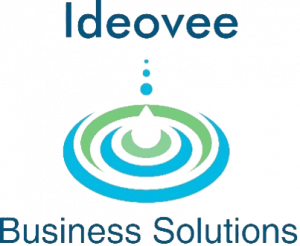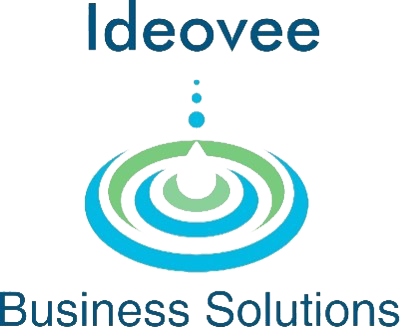
Strategic Solutions for 2024 Heavy Equipment Sales Challenges: The ABM Advantage
In heavy equipment, B2B sales, and service, the landscape in 2024 will present challenges for business leaders and owners. Inflation, competitive differentiation, scarcity of high-quality leads, the ability to reach purchase decision-makers, a shrinking workforce (in sales and heavy equipment operation) and extended deal cycles underscore the need for innovative solutions. Amidst these challenges, account-based marketing (ABM) is a powerful strategic approach that delivers tailored solutions to navigate the complexities of the heavy equipment market.
The Landscape of Heavy Equipment Sales Challenges: A Closer Look
Exiting 2023, heavy equipment and parts continue to face shortages, inventories remain depleted, and prices have witnessed a sustained surge over the past two years. These challenges extend beyond the immediate aftermath of the pandemic, with long-standing issues in the heavy equipment supply chain exacerbating the situation. A shrinking workforce, supply chain bottlenecks, higher-than-expected demand, and an inflationary world economy combine to contribute to the unique challenges faced by heavy equipment manufacturers, local dealers, and service providers.
ABM’s Strategic Impact on Sales Challenges: A Deep Dive
- Inflation and Pricing Pressures: Challenges: Prices have increased for a wide range of reasons, but most obviously because demand was greater than expected. There have been increases in the price of components and equipment and increased borrowing costs for mortgages, capex, and construction loans. ABM Strategy: Utilize ABM to target high-value accounts that align with premium product offerings, focusing on personalized messaging that highlights the value proposition and quality of the equipment. Example: Craft targeted content and engage in one-on-one communication with decision-makers in key accounts, showcasing how investing in high-quality equipment leads to long-term cost savings through reduced maintenance and downtime.
- Competitive Differentiation: Challenge: Heavy equipment dealers often struggle to differentiate themselves due to standardized product offerings from manufacturers, strong customer loyalty to established brands, limited customization options, a technical sales focus, infrequent transactions, and challenges in conveying a unique brand identity through traditional marketing. The emphasis on product features and industry expertise further contributes to a market where dealerships may appear similar. To overcome this, dealerships need to prioritize customer-centric approaches, offering exceptional service, robust after-sales support, innovative financing, and specialized training programs to carve out a distinct and valuable niche in the competitive heavy equipment market. ABM Strategy: Leverage ABM to position the brand as a thought leader in the heavy equipment industry. Develop personalized content that addresses the unique challenges faced by customers and positions the company as a trusted partner. Example: Create targeted campaigns highlighting innovative features, safety measures, and sustainability initiatives, emphasizing how these factors differentiate the brand from competitors and align with the values of key accounts.
- Lead Quality and Decision-Maker Access: Challenge: Generating high-quality sales leads and reaching decision-makers on the buying committee poses a complex challenge. The complexity of heavy equipment purchases, often involving substantial investments and technical specifications, makes it crucial to connect with decision-makers who understand the operational needs and financial considerations. Additionally, the buying process in this industry is characterized by longer cycles, necessitating sustained engagement with multiple stakeholders. The scarcity of easily accessible and up-to-date contact information for key decision-makers, coupled with the industry’s reliance on relationships and traditional sales channels, further complicates the task of effectively reaching and influencing the individuals who hold purchasing authority within organizations.ABM Strategy: Implement ABM to precisely target decision-makers within high-value accounts. Use account-specific messaging to address pain points and offer tailored solutions, ensuring that the right message reaches the right individuals. Example: Utilize account-based advertising to directly reach decision-makers on digital platforms, delivering content that speaks to their specific challenges and showcasing how the company’s offerings meet their unique needs.
- Extended Deal Cycles: Challenge: Extended deal cycles in the heavy equipment market stem from the intricate nature of the purchasing decision. Heavy equipment acquisitions involve substantial investments, intricate technical specifications, and a comprehensive evaluation of the equipment’s long-term impact on operations. Decision-makers often require extensive deliberation to ensure alignment with organizational needs and goals. Furthermore, the collaborative nature of the buying committee, which typically includes input from various departments such as operations, finance, and maintenance, contributes to a longer decision-making process. Additionally, factors like regulatory compliance, project timelines, and budget constraints introduce complexities that necessitate thorough consideration, causing deal cycles to extend as stakeholders navigate the intricacies of selecting the right heavy equipment solution for their specific requirements.ABM Strategy: Employ ABM to nurture relationships with key accounts over the long term. Implement personalized touchpoints and content throughout the buying journey, addressing concerns and providing the necessary information to facilitate informed decisions. Example: Develop targeted educational content, such as webinars, hands-on training sessions, or industry reports, addressing common pain points in the heavy equipment sector. Use these resources to engage with key accounts, positioning the company as a trusted advisor and shortening decision-making cycles.
ABM Metrics: Demonstrating Tangible Results
The strategic implementation of ABM in the heavy equipment B2B sales and service market is not just theoretical; it yields measurable results. Companies adopting ABM report notable improvements in key metrics, with 74% experiencing revenue growth. The impact extends across various facets, including an 85% increase in active engagement with selected ABM accounts, a 78% surge in pipeline growth, and a 77% elevation in sales team satisfaction. Furthermore, 70% witness improved brand awareness, perception, and knowledge.
Conclusion: A Strategic Imperative for Heavy Equipment B2B
As the driving force behind revenue and consequently business growth, ABM is a crucial revenue pipeline strategy for heavy equipment B2B sales in 2024 and beyond. Embracing the personalized and targeted nature of ABM is not just a trend; it is a strategic imperative for companies navigating the competitive and dynamic landscape of heavy equipment B2B marketing. By strategically addressing specific challenges in the year ahead with ABM, companies in the heavy equipment market can not only weather the current market conditions but also position themselves for sustained success in the evolving, intensely competitive market.

